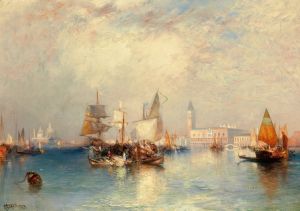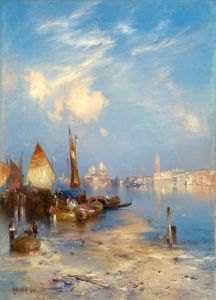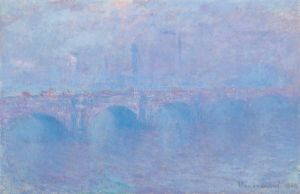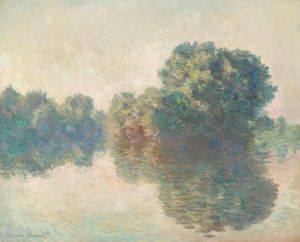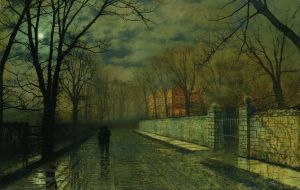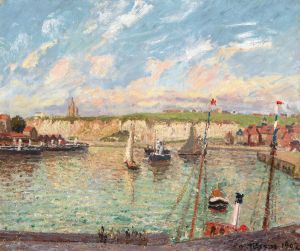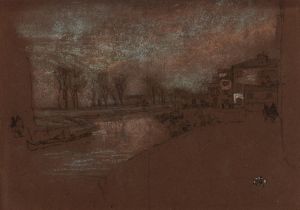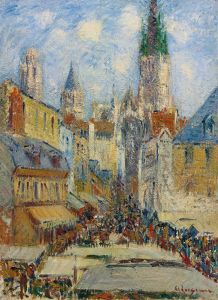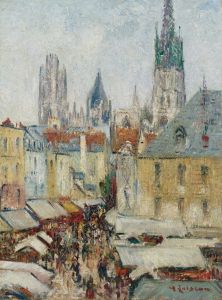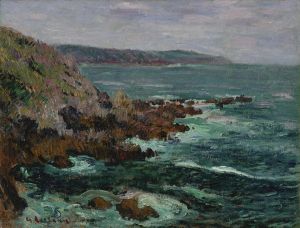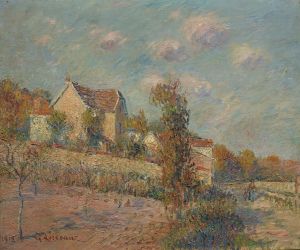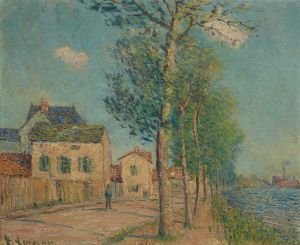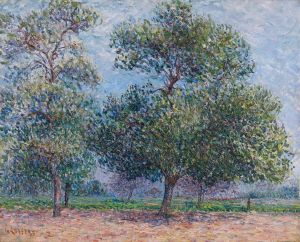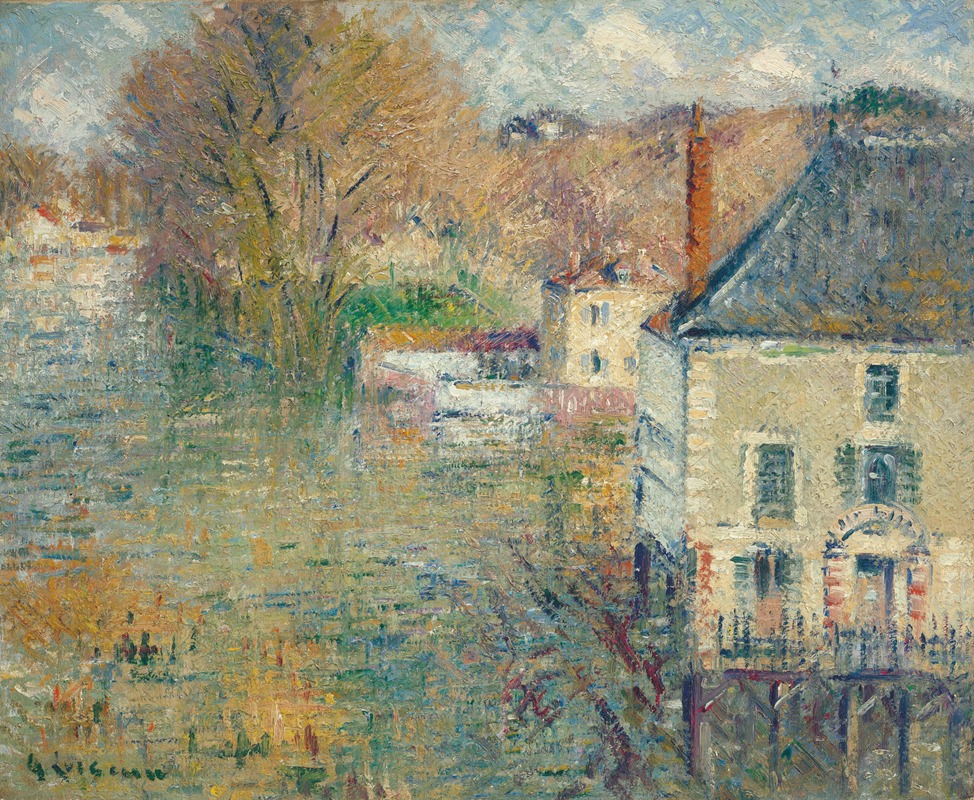
Inondation à Giverny
A hand-painted replica of Gustave Loiseau’s masterpiece Inondation à Giverny, meticulously crafted by professional artists to capture the true essence of the original. Each piece is created with museum-quality canvas and rare mineral pigments, carefully painted by experienced artists with delicate brushstrokes and rich, layered colors to perfectly recreate the texture of the original artwork. Unlike machine-printed reproductions, this hand-painted version brings the painting to life, infused with the artist’s emotions and skill in every stroke. Whether for personal collection or home decoration, it instantly elevates the artistic atmosphere of any space.
Gustave Loiseau was a French Post-Impressionist painter known for his landscapes and scenes of rural life. Born on October 3, 1865, in Paris, Loiseau developed a distinctive style characterized by his use of vibrant colors and dynamic brushwork. He was particularly interested in capturing the effects of light and atmosphere, often painting en plein air to achieve a sense of immediacy and authenticity in his work.
One of Loiseau's notable works is "Inondation à Giverny," which translates to "Flood at Giverny." This painting is an example of Loiseau's ability to depict natural scenes with a focus on the changing conditions of weather and light. Giverny, a village in the Normandy region of France, is famously known as the home of Claude Monet, another prominent Impressionist painter. The area was a popular subject for many artists of the time due to its picturesque landscapes and the unique quality of light.
"Inondation à Giverny" captures a scene of flooding, a natural occurrence that would have been familiar to residents and visitors of the region. Loiseau's painting likely depicts the aftermath of heavy rains, with water covering the ground and reflecting the surrounding environment. The composition of the painting emphasizes the expansive water surface, creating a mirror-like effect that blurs the line between the land and sky. This technique highlights Loiseau's interest in the interplay between water and light, a common theme in his body of work.
Loiseau's brushwork in "Inondation à Giverny" is characterized by loose, expressive strokes that convey the movement and fluidity of water. His use of color is both vibrant and subtle, capturing the muted tones of the overcast sky and the rich hues of the landscape. The painting demonstrates Loiseau's skill in balancing detail with abstraction, allowing viewers to experience the scene's atmosphere without being overwhelmed by minutiae.
Throughout his career, Loiseau was associated with the Post-Impressionist movement, which sought to build upon the innovations of Impressionism while exploring new artistic directions. He was particularly influenced by the work of Camille Pissarro and Alfred Sisley, both of whom were known for their landscape paintings. Loiseau's work, including "Inondation à Giverny," reflects his commitment to capturing the essence of the natural world through careful observation and a keen sensitivity to the effects of light and weather.
"Inondation à Giverny" is a testament to Loiseau's ability to transform a simple scene of nature into a compelling work of art. The painting not only showcases his technical skill but also his deep appreciation for the beauty and complexity of the natural environment. As with many of his works, Loiseau invites viewers to pause and reflect on the transient moments of everyday life, encouraging a deeper connection with the world around them.
Gustave Loiseau continued to paint until his death on October 10, 1935. His works remain celebrated for their contribution to the Post-Impressionist movement and their enduring ability to capture the fleeting beauty of the natural world. "Inondation à Giverny" stands as a significant example of his artistic legacy, offering insight into both his personal style and the broader context of early 20th-century French painting.





